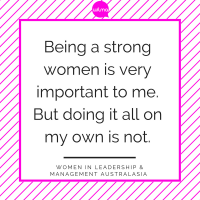The ongoing debate about women’s role in the scheme of things continues to puzzle me, so I’ll risk setting out my take in this article.
Former department head Allan Hawke continues his ‘People matter’ series on managing staff.
1963
In 1963, Beryl Wilson was proposed as Australia’s first female trade commissioner – to the Los Angeles post, based on her experience managing the trade offices in San Francisco and Los Angeles. That same year, American writer Betty Friedan published her critique of women’s exclusion from the public realm in The Feminine Mystique. This radical new thinking about women’s place in the world had obviously not yet reached the corridors of power in Canberra.
In a minute that stands as a public-sector classic, A. R. Taysom wrote to his director, K. L. Le Rossignol, that ”it is difficult to find reasons to support the appointment of women trade commissioners … such an appointee would not stay young and attractive forever and later on could well become a problem”. He proceeded to set out seven arguments against the proposition.
Rossignol agreed with Taysom, sharing his belief that a long-term unmarried female officer could become ”something of a battle axe”, noting there had been no alternative but to dismiss some female public servants aged about 50 who had ”turned into complete tyrants”.
To their credit, Department of Trade and Industry secretary Alan Westerman and his deputy, Alan Carmody, decided to go ahead with the appointment.
1966
Until the ”marriage bar” was lifted in 1966, women who married had to resign from the public service – that seems unbelievable now. When one of my exemplars, Sir William Cole, was considering promoting Helen Williams as the first female branch head in the Finance Department in 1979, the division head objected, saying she would be promoted ”over his dead body”. Cole proceeded with the appointment (but the division head didn’t die!).
Williams went on to hold secretary-level appointments from 1985 until 2009 when she retired, an extraordinary career in its own right, paving the way for those who have followed in her footsteps. In my view, she doesn’t receive the recognition as a role model she deserves, nor is the difficulty of her trailblazing path sufficiently appreciated.
A clue to the vast, untapped potential of women in public life can be found in the life and work of American theorist Mary Parker Follett. Most people have never heard of her, let alone the work she did in the 1890s and early 1900s, which led Peter Drucker to title her ”the prophet of management”. She had a huge (largely unacknowledged) influence on the founders of the human relations school, coined terms such as ”win-win” and pioneered a management focus on the so-called ”soft skills”, such as communication. Follett is a heroine and it would be a fitting tribute for today’s women to form a society in her honour and to proselytise her work.
The views expressed in that 1963 minute may seem anachronistic through the prism of time, though they and other barriers still bedevil us more than 50 years later. Christine Wallace’s article ”It’s still a man’s world at the ANU‘‘ last month captures the problem, as does Henry Ford’s maxim: ”Thinking is the hardest work that there is, which is probably the reason why so few engage in it.” More women than men have been graduating from Australian universities since 1985 and they make up 45 per cent of the workforce, though, as Wallace says, the expectation that the pipeline effect would resolve the gender imbalance hasn’t worked out.
1995
In 1995, as secretary of the Department of Veterans’ Affairs, I set a target of 50 per cent women at all levels up to the senior executive service, and committed to an increase at that level. The subsequent furore accused me of setting quotas and warned this was contrary to the merit principle. One of my secretary colleagues said he regarded himself as the best-placed person to decide who was the most meritorious applicant for any job under his jurisdiction. I had to think about that for a while.
My approach was based on taking concrete action to meet the leadership challenges of the future. The question was not why to have such a target, but how to achieve it. I said at the time: ”For the public service as well as for the private sector the major barriers are cultural, but we will not change anything if we do not examine the practices and behaviours that contribute to that culture and consider innovative ways of increasing flexibility and career prospects … Change requires action and there are a number of areas where action should be focussed.”
1996
In 1996, women comprised 47 per cent of APS positions, 15 per cent of the SES, and one out of 18 secretaries; it was estimated it would take another 25 to 30 years to reach parity with men. In December 2013, the results were 58 per cent of APS positions, 39 per cent of the SES and five out of 18 secretaries (28 per cent). Also of interest here is that 26 per cent of the APS’s independent agency heads were women and 50 per cent of their direct reports were female!
By contrast, 12 of the top-500 Australian public companies had female chief executives in 2012 (i.e. 2.4 per cent). The number of ASX200 boards without any female directors has more than halved from 87 boards in June 2010 to 42 boards this year, while only 10 per cent of their executive management positions are held by women – fixing that will be much harder than increasing the percentage of board members who are women. Another positive sign is that four in 10 attendees at this year’s Australian Institute of Company Directors conference were women, up from three in 10 last year.
On the 2013 World Economic Forum’s global gender gap index, the Scandinavians dominate the top of the ladder, New Zealand comes in at seventh, Britain 18th, the United States 23rd and Australia back in 24th place out of the 68 countries assessed. In 2006, we ranked 15th, by 2008 we were 21st, and 25th in 2012.
Australia’s aid projects with other nations are conditional on them providing a gender-equity strategy to us, but Australia doesn’t have one itself!
Research by Goldman Sachs JBWere, Credit Suisse, McKinsey and others supports the business case for gender diversity. Australian business executive Elana Rubin, commenting on the 2012 census of women in leadership, said all organisations ”have policies to facilitate diversity yet it hasn’t happened”. She cited research that ”highlights hidden barriers and unconscious bias that limit diversity at work” and argued the need to review the language and selection criteria for promotion to ensure they really were neutral.
Since 2012, the federal government has required employers of 100 or more people to report on gender-related matters. Institute of Public Affairs senior fellow Julie Novak sees this as a red tape nuisance, while Australian columnist Judith Sloan considers the 100 threshold to be quite low and the new level of detail, which took effect on April 1, 2014, so ludicrous as to give gender equality a bad name.
On the other hand, Chief Executive Women’s president, Christine Christian, argues that the moment measurement becomes optional the numbers will go backwards, because measuring performance focuses the mind much faster than good intentions and reporting the data drives change. The federal Sex Discrimination Commissioner, Elizabeth Broderick, is of a similar mind, saying reporting raises awareness of how many women are employed in specific areas. Her ”Male Champions of Change” project will undoubtedly make a difference.
In November last year, a Financial Review editorial backed that initiative and rightfully argued that the foreshadowed paid-parental-leave scheme would redistribute income from ordinary Australians to high-flying ones, before concluding that allowing executive families to employ less-expensive foreign nannies would be a better policy! Clive Palmer’s suggestion that Tony Abbott’s chief of staff, Peta Credlin, was involved in the paid-parental-leave policy so she could benefit from it was simply disgraceful.
You might join me in applauding the Business Council of Australia’s report Increasing the Number of Women in Senior Positions, which noted poor progress across corporate Australia, argued the market was not working and set an aim for its 120 member companies to increase the proportion of women in senior roles to 50 per cent over the next decade. The report’s 171 recommendations will help that end, provided public disclosure measures are retained.
You might then be as perplexed as me that the report was launched in Melbourne on the morning of the 2013 Melbourne Cup, straight out of a spinmeister’s playbook on how to bury a story while purporting to put it into the public arena. And what are we to make of the council’s chief executive, Jennifer Westacott, and her deputy, Maria Tarrant, publicly supporting the proposal to ”streamline gender-diversity reporting” – against their members’ wishes?
Fortunately, the uproar at the proposed changes led the government to retain the existing gender-reporting rules for another year, pending consultation about future arrangements. The appointment of Catherine Livingstone as the Business Council’s president, succeeding Tony Shepherd, should restore some common sense to this bizarre debate.
As Workplace Gender Equality Agency director Helen Conway has said: ”Voluntary targets, informed by metrics around turnover rates, appointments and promotions … [and] linking the achievement of targets to a manager’s key performance indicators increase the likelihood of the target being achieved.”
Former banking chief David Murray also nailed it by identifying the vulnerability of targets to lip service if they are not backed up by specific action addressing culture, through attention to work systems, symbols and leaders’ behaviour.
As a chairman or director of 12 former and current public and private sector boards, I see firsthand the difference that women make to their deliberations. On one board, woman make up 50 per cent of members; one doesn’t yet have a female director. When there is more than one ”token” woman, the hue and perspective changes. More women in senior roles leads to better management because they are more inclined to challenge traditional assumptions and foster innovation, better products and better services. Macquarie University research also shows that Australian boards with female chief executives and directors deliver better margins and returns.
During the Australian Strategic Policy Institute’s conference in February on the future submarine, it took a woman – the Defence Science and Technology Organisation’s maritime division head, Janis Cocking – to put the rest of the speakers and audience right about whether the government or industry bore the risk if bad decisions were made when she said ”the risk is to submariners who we send in harm’s way”.
2000
In 2000, defence force chief Admiral Chris Barrie and I tried to convince our chiefs of service colleagues to remove the barriers to women in certain positions, arguing that men and women should be subject to the same criteria for selection. This was a bridge too far then, but frontline roles other than special forces have been open to women in the army since January 1, 2013, and all restrictions are expected to be lifted by 2016. That’s not to deny the need for continuing cultural change at all levels. It is clear, however, that defence’s senior leadership cadre has stepped up in advocating the cause, monitoring progress, establishing facilitative mechanisms and holding to account those who fall short of the mark.
One test of leadership is whether the organisation you lead is in better shape when you leave than it was when you joined. If the answer is ”yes”, is it because of or in spite of you? One way to leave an organisation better than you found it is by making it a safer place for more diverse voices. Formal policies and programs are one solution, but another (cheaper) way is to pay particular attention to every decision you make about people, to send clear, consistent messages about what you value, remembering that facts are an approximation to reality while perceptions are reality.
Whom you recruit, mentor, sponsor and promote sends an important message. Be careful about cloning copies of yourself; it’s better to discover your strengths and weaknesses and surround yourself with people who can ameliorate or overcome your weaknesses. It’s your job to identify and develop two or three people who will be able to do your job better than you can when you move on. Perhaps obviously, your choice should be guided not only by the results that they are capable of achieving, but also by the way they treat other people.
I’m not suggesting that the solution to a better future lies solely with women. Action is required by both sexes. That’s why the Male Champions of Change project is such a heartening development. These elders will help to prune away the thicket of outdated rules and behaviours that impede women. The challenge for these champions and their kindred spirits is to succeed in making a safe space for newly empowered women so they may become free and full participants in their lives and work.
The men in the movement will know they have succeeded when their services are no longer needed. In the meantime, we men would do well to keep in mind King Arthur’s answer to what it is that women most desire: the sovereignty to choose for themselves, not to have men make their choices for them.
Among the reasons (excuses?) given in the 1963 minute for not having female trade commissioners was ”it is difficult to visualise them” in such a role. For this failure of imagination, those men and their fellow travellers must take responsibility.
As the barriers to women contributing to public life are removed, inch by sometimes painful inch, more women will themselves reimagine their roles and make choices that may still be difficult for some men to visualise. Unconscious biases and institutionalised covert discrimination, hidden inside widely accepted cultural norms, create subtle but immensely powerful barriers. Until all those barriers have gone, then all of us – women and men – are the poorer for it.
Those gender stereotypes from 1963 and 1966 are still part of living memory for many people, emphasising how hard it is to redress such entrenched cultures and that social change is always slower than most of us anticipate or would like. So much has already changed for the better. I hope to see more developments in the contribution that women can make to public life in my time, and that my daughter will see even more in the years to come.
This article was originally published on The Canberra Times 1st July Read the original article









Leave A Comment